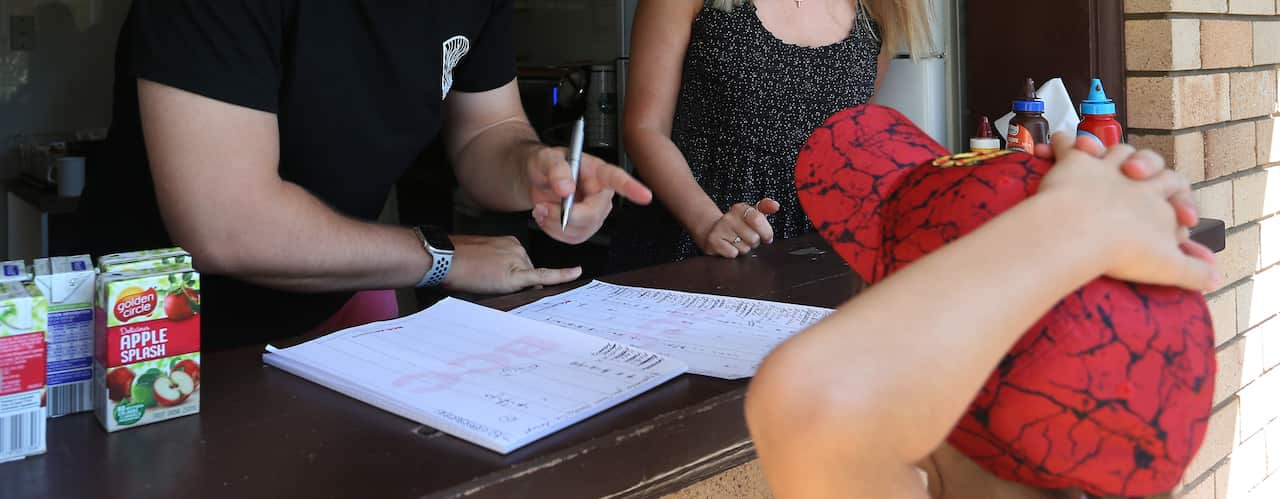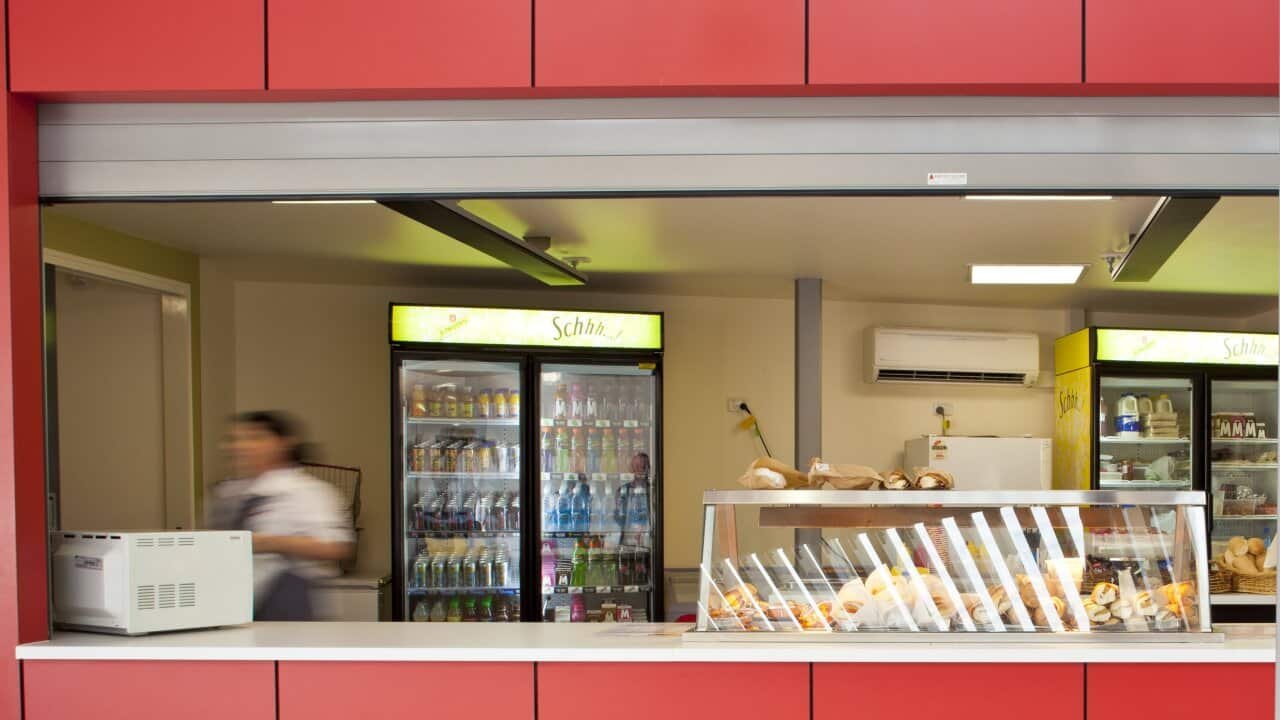Key Points
- There’s been a 20 per cent reduction in school canteens in one part of Australia, according to a group.
- Canteens were traditionally staffed by parent volunteers but these days are more likely to have paid staff.
- The Federation of Canteens in Schools hopes to create discussion to secure the future of canteens in schools.
For many who attended school in Australia, the canteen might evokes some strong memories, whether it be the value of the cheese toasties, the strict rules of the ‘canteen lady’ who ran the place or the independence felt when writing out a lunch order on a paper bag.
Referred to in some parts as the tuck shop, the facility which more often than not has a roll-down front window that opens to reveal a counter and a list of available food items, caters to students at primary and high schools at recess and lunch breaks.
But the key advocacy group for food in schools fears canteens “are under threat like never before”.
Canteens in schools
Leanne Elliston, Federation of Canteens in Schools (FOCIS) chairperson and senior dietitian at Nutrition Australia, believes public school canteen numbers across the country have been declining for the past few years.
School canteen numbers are not monitored nationally, but Elliston believes canteen closures in the ACT, where she is based, were likely being replicated in other states and territories.
“In the past three years, we’ve seen a 20 per cent reduction in school canteen services within ACT public schools,” Elliston said.
Megan Sauzier, CEO of Foodcore Nutrition Services, formerly the WA School Canteen Association, said: “Anecdotally, we know that canteens have closed and reduced days of operation.”
And representatives from similar state-based associations agreed it had become increasingly challenging to provide services because of increased operating costs.
That is why the FOCIS wants to hold a national round table event to examine what needs to be done to keep school canteens operating.
More than lunch orders
Elliston estimates about 50 to 70 per cent of Australian public schools would have what she considers a “traditional canteen”.
Hub canteens also operate in some areas, which allow smaller schools to order lunches from other schools each day, or on certain days of the week.
“The traditional canteen model, where children can run to the canteen at break and buy their fruit salad and yoghurt or whatever, and make a lunch order … that is essentially what we are calling a canteen and that is what we’re trying to save,” she said.
Elliston said: “Having the ability to purchase food from a school canteen is actually a really lovely, fantastic backstop for parents to rely on. I know I did with my children.”
“Canteens provide children with opportunities to make a choice, to purchase something whilst at school, so it’s actually a really good learning opportunity for them.
“They get to engage in a transaction, they get to choose something, they’ve got that agency to choose something for themselves.”
She said canteens often also played a vital role in ensuring children had access to food.
“Many canteens can also sometimes be that emergency food for those children who, sadly, don’t get food from home or come to school hungry, and so that in many cases, the canteen is there as that emergency as well,” she said.
Staffing school canteens
Canteens were traditionally managed by parents and citizens associations (P&Cs) and in the past had been mostly run by parent volunteers.
While mothers once made up the majority of canteen volunteers in decades gone by, changing social dynamics mean fewer people have the time to contribute in this way today.
“We just don’t have volunteers like we used to 30 years ago, with both parents working, so the canteen model now has shifted to having to pay for staff, and that, squeezes the financial viability of the canteen, because it’s a huge cost when we have to pay for staff,” Elliston said.
It has previously been found that across the country.
A costly exercise
She said while meeting legislative requirements such as food safety standards which require staff training added to the load associated with working in a canteen, an even bigger challenge was the high cost of food.
Elliston said while decades ago profits from canteen sales may have gone towards equipment at the school or towards creating or maintaining parts of schools, there was little profit to be made these days.
“For many canteens, it’s about breaking even, at least breaking even, so the service can be available for the schools and the families to access,” she said.
“The , so it gets very challenging for them to be able to sell affordable food, to children and families when they’ve got high operating costs.”
The Federation of Canteens in Schools wants to come up with a plan to keep school canteens open and financially viable. Source: Getty / Lisa Maree Williams
Convenience and nutrition
Elliston said school canteens provided far more than just lunch and recess for students.
“They are also an opportunity to expose children to healthy food options that they may not necessarily have such exposure at home, but in a positive way,” she said.
“It’s exciting getting food from the canteen, and so offering those healthy options to children whilst at school can be a really good way for children to be exposed to them.”
Improving delivery
The FOCIS wants those in the school canteen sector to submit an expression of interest to attend a national meeting to discuss seeking to develop innovative measures to keep school canteens open and financially viable.
Elliston said such an event would likely identify trends and what was working and what was not, she offered a few potential paths forward.
“It could be a matter of the government subsidising in some way for the canteens to stay, it could be looking at, how canteens are staffed, they may need to be staffed by the school rather than the P&C, for instance,” Elliston said.
She said another possibility could be students being provided meals at schools, “like the European model”.
Keeping canteens on campus
Elliston said the federation is concerned “that having access to a canteen in schools is going to become a thing of the past”.
“There has to be a means in which food can still be offered or accessed at school, otherwise, it’s all down to the parents to make sure they pack their children’s lunchbox and we know that that’s not always possible,” she said.
“I don’t know about you but the days I had a lunch order were the best days at school.”

